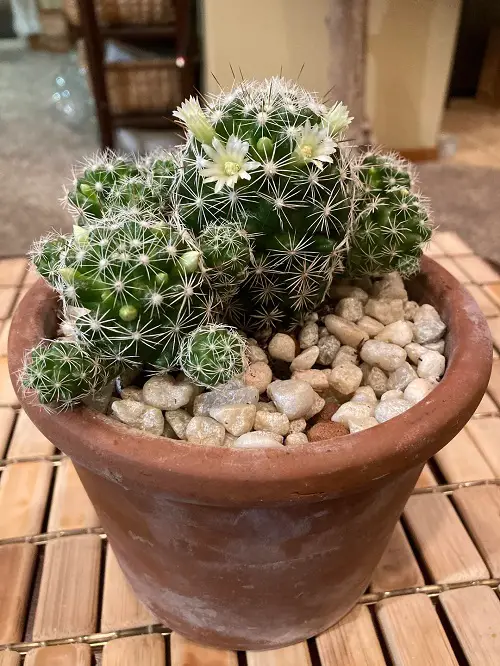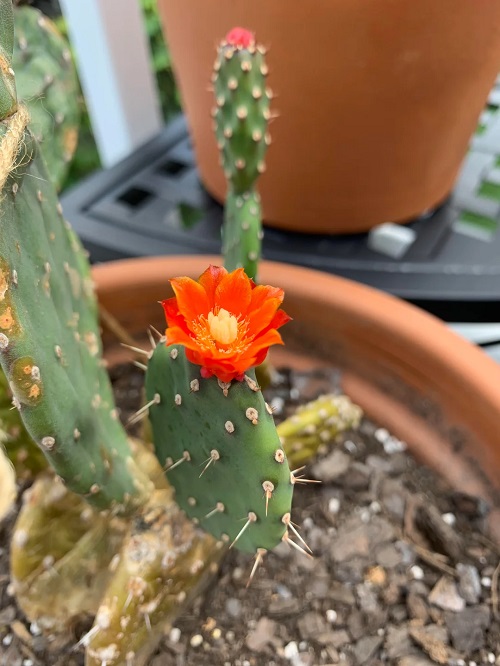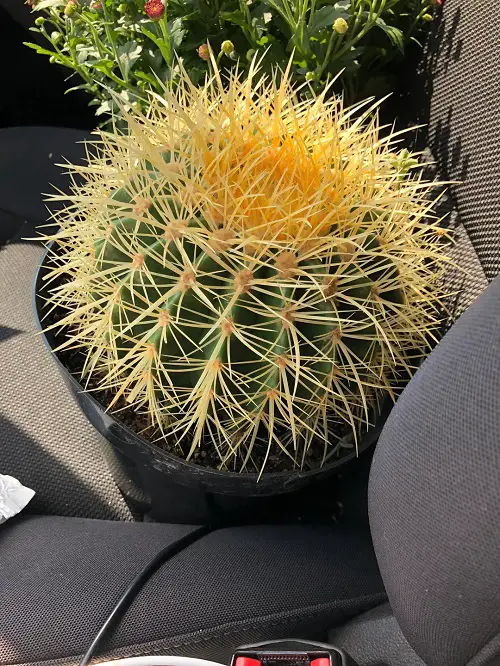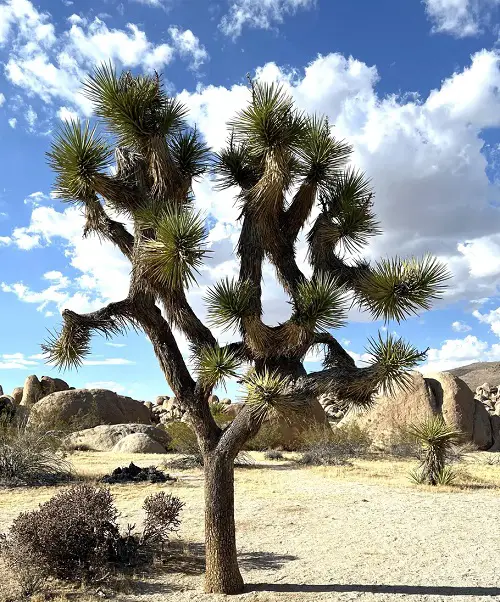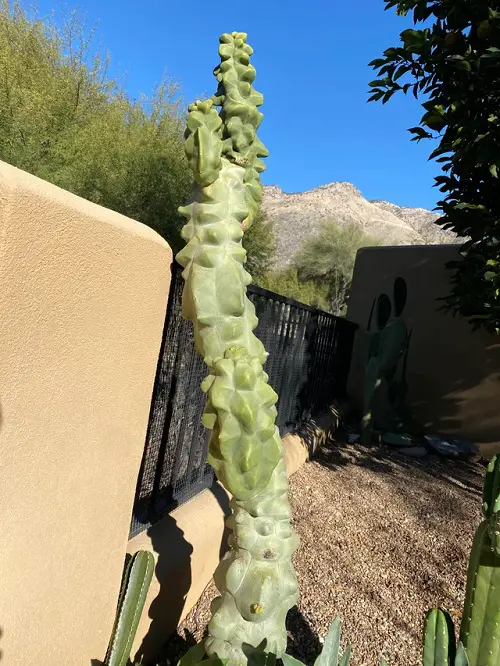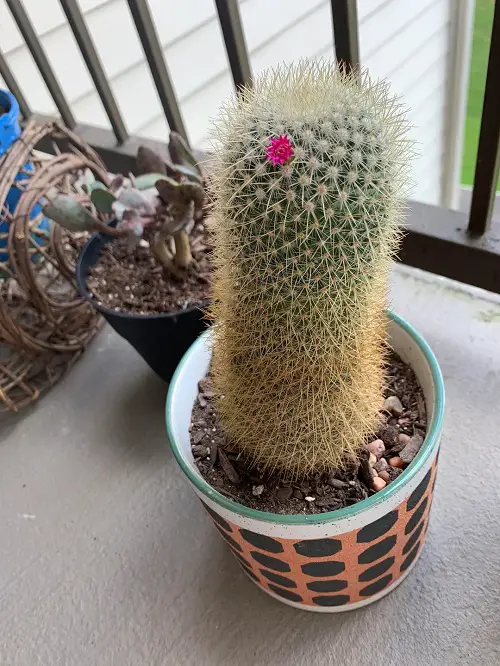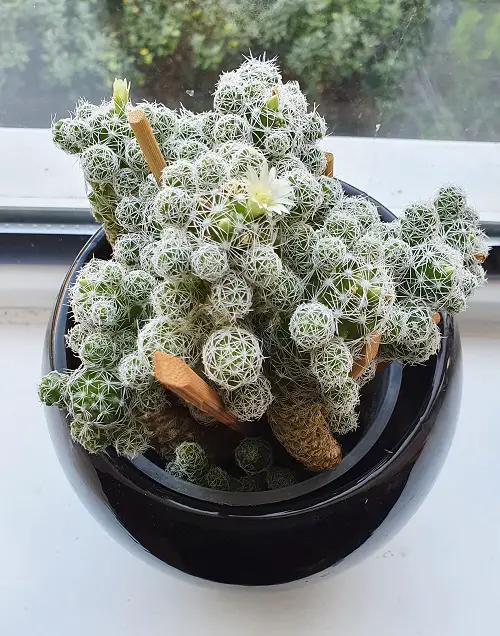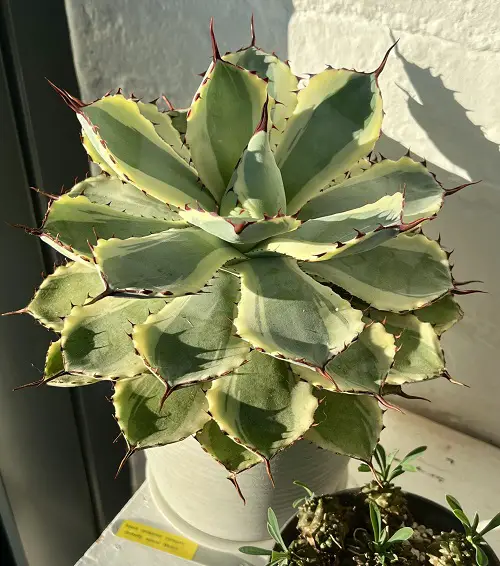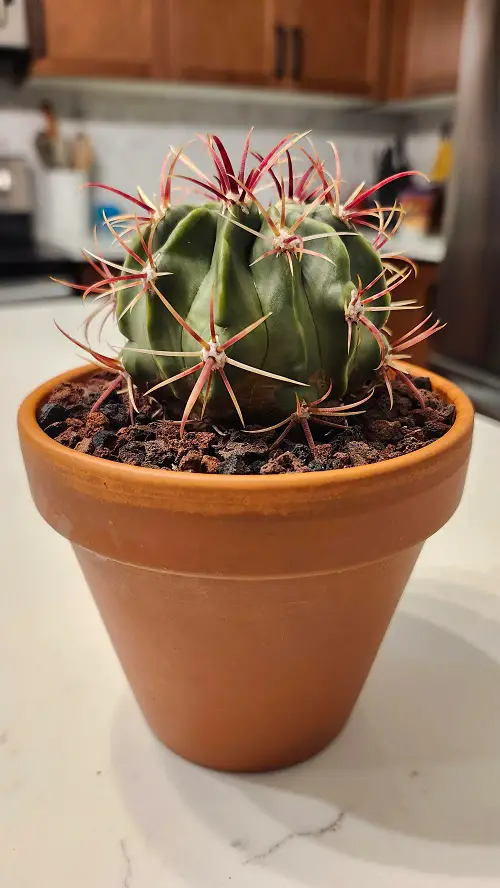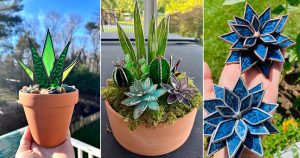If you live in an area with lots of wildlife, then some of these Spiny succulents can be your great pick—have a look!
Spiny succulents on this list are just like beauty with brains as they are grown for their remarkable resilience, beautiful appearance, and long-lasting companionship. So, choose suitable buddies for your area!
Why Do Succulents Have Spines on Their Body?
Those sharp spines on succulents aren’t just for show—they’re a built-in defense mechanism. Spines discourage animals from nibbling on the juicy stems and leaves, which store precious water, especially crucial in desert environments where every drop counts.
Besides protection, spines also act as a sunblock by shading the plant’s surface, helping it hold onto moisture for longer.
Plant’s Morphology
When it comes to identifying spiny succulents, it’s helpful to understand a bit about their anatomy. Although thorns, spines, and prickles might all seem similar, they actually come from different parts of the plant and serve the same protective purpose. Here’s a quick guide:
- Thorns are modified branches or stems that are typically tough and woody.
- Spines arise from leaves and are pointed structures jutting out from the surface.
- Prickles come from the outermost plant layer and appear on stems or leaves.
Best Spiny Succulents
1. Silver Torch Cactus
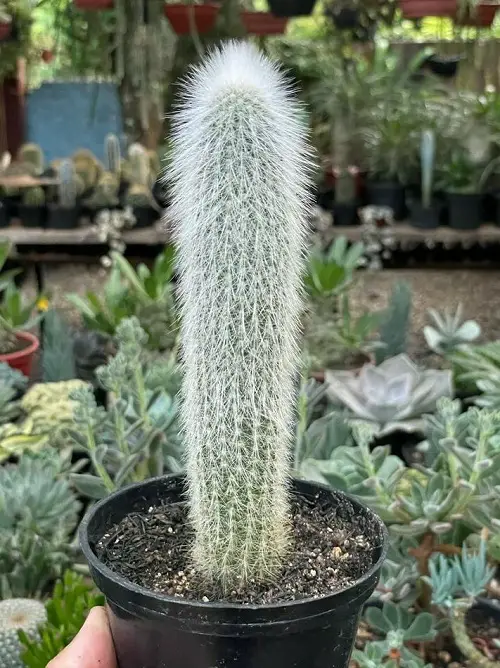
Botanical Name: Cleistocactus strausii
The silver or wooly torch cactus is native to Bolivia and Argentina. It grows fast, forming numerous erect, column-like stems covered with soft white spines. Each spring and summer, you can see its large, funnel-shaped, deep magenta flowers that bloom for 4-5 days are just icing on the cake!
Thriving in full to partial shade with moderate watering requirements to promote proper root development. Plus, unlike typical cacti, it prefers cooler temperatures and can withstand hard frost as low as 14°F without issue.
2. Staghorn Cholla
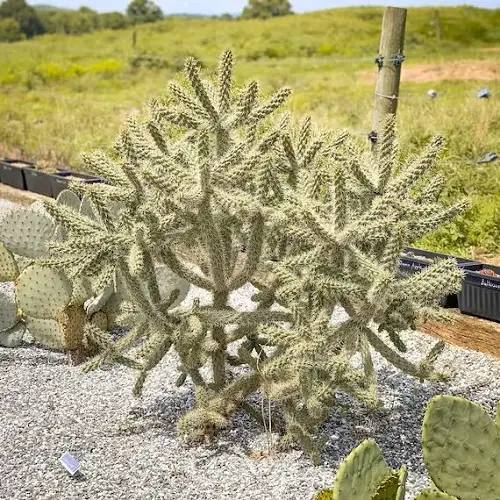
Botanical Name: Cylindropuntia versicolor
The Staghorn Cholla cactus is found predominantly in small areas of South Arizona, particularly in Tucson. It has a tree-like structure characterized by upright branches reaching up to 6 feet and purple-green stems containing short, bristle-like spines.
The spines are short and do not overlap each other, like the Buckhorn cholla. They can easily detach and cause skin irritation upon contact so, just be very careful to handle it.
3. Prickly Pear
Botanical Name: Opuntia ficus-indica
Prickly Pear is a one-paddled cactus with long spines that, from a distance, almost resemble a hedgehog. In scientific terms, we call these spines glochids. Humans can easily remove them from plants, chop them, and then give them to animals to eat.
This plant is cultivated for its fruits and cladodes (leaflike stems) and is used as a famine food in places of droughts or extreme poverty. Young stems are used to make vegetables, while the old ones are for forage.
4. Golden Barrel Cactus
Botanical Name: Echinocactus grusonii
The Golden Barrel Cactus has a round-stem succulent body with bright golden spines sprouting from the areoles. With age, the plant becomes oblong and starts to bend towards the southern direction, earning its nickname “compass cactus.”
If you want to grow it, then the best location would be among large rocks or borders where they receive full to partial sun and need well-drained soil with minimal watering, especially when the soil is dry!
5. Joshua Tree
Botanical Name: Yucca brevifolia
This plant is famous for its distinct forms and resilience. The Joshua tree is a tree-sized succulent that grows slowly and can reach 20 to 70 feet. It is also popular as the ‘oldest living plant,’ as it can live around 150 years—yes, you read right!
Plus, it has a single main trunk with fibrous cork-like bark, rounded branches, and clusters of leaves with spins on tips. Flowers appear to have panicles each measuring 1-2 inches long.
6. Totem Pole Cactus
Botanical Name: Pachycereus schottii var. monstrous
You will see Totem Pole cactus growing wildly in candelabra-like arrangements, which means it has numerous, tall, columnar stems branching out with irregularly shaped ribs and few tiny spines or bristles. It has edible, strawberry-like red fruits.
Thrives in extreme sun and heat but not prolonged frost. It can grow near tall colored walls or decorative containers.
7. Pincushion Cactus
Botanical Name: Mammillaria spp.
Looks like a spiny globe? Isn’t. But it is a cactus from the Cactaceae family, native to the USA and South America. Known for its fleshy stems, spines, and funnel-shaped flowers that form a ring at the top columnar.
If you are interested in growing this perennial beauty, then keep it in full sun or bright, direct sunlight. In hot weather, shift to some afternoon-shaded areas. Remember, cactus-mix soil is essential for Pincushion Cactus.
8. Thimble Cactus
Botanical Name: Mammillaria gracilis fragilis
Straight from Mexico, the Thimble Cactus is a perennial succulent whose dark green stems are covered with spines and can grow less than 6 inches. It grows best in full or bright sun and well-drained cactus soil. To encourage bloom, you must shift the plant to a colder location in spring.
These types of succulents are grown especially for their tough nature, tolerating different climatic conditions. But that doesn’t mean they don’t need your attention.
9. Butterfly Agave
Botanical Name: Agave ‘Kissho kan’
It is an evergreen, perennial plant that forms symmetrical rosettes of thick, silver-blue to blue-green leaves adorned with toothed margins and needle-like reddish-brown spines. These spines can be hazardous to humans and pests, so it would be better to plant them away from paths or walkways.
Compact and versatile, it thrives easily in portable containers and, on maturing, produces shoots that can be easily propagated.
Note: Always wear gloves, safety glasses, long-sleeved shirts, and closed-toe shoes whenever handling sharp needles!
10. Devil’s Tongue
Botanical Name: Ferocactus wislizeni
The Devil’s Tongue is a bold, barrel-shaped cactus with long spines covering its thick stems. Growing up to one meter high, it blooms in late autumn with small, funnel-shaped flowers, followed by oval fruits. If you love desert gardens, then this cactus is just perfect for it.
Now, you have the list of the best spiny succulents that are hardy and full of character, each with its own unique charm and resilience. So, ready to add some spines to your garden? Share your picks and experiences in the comments below!

